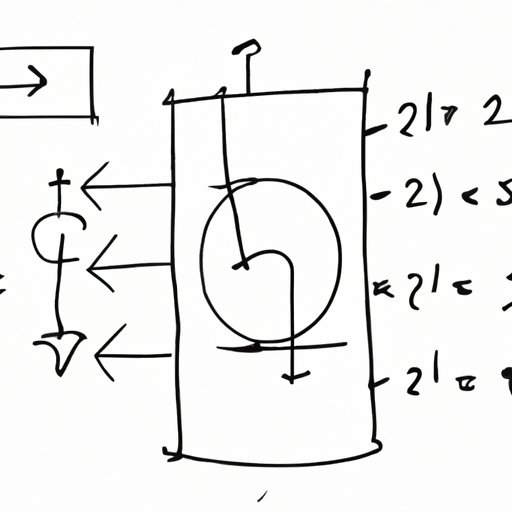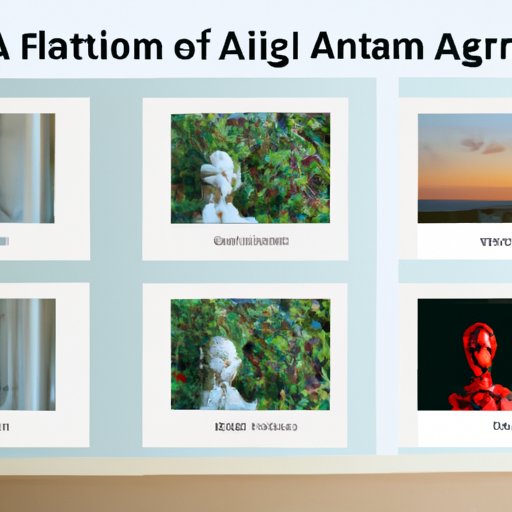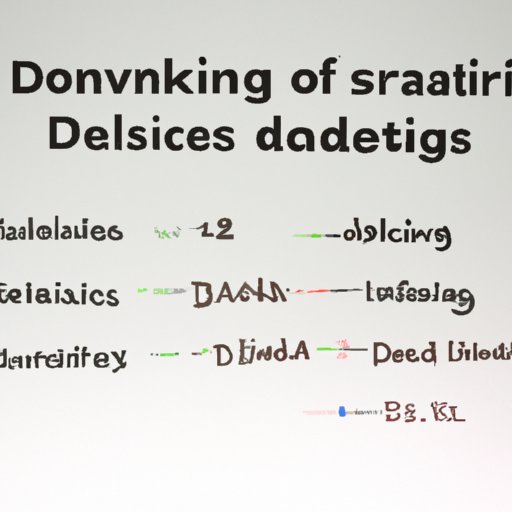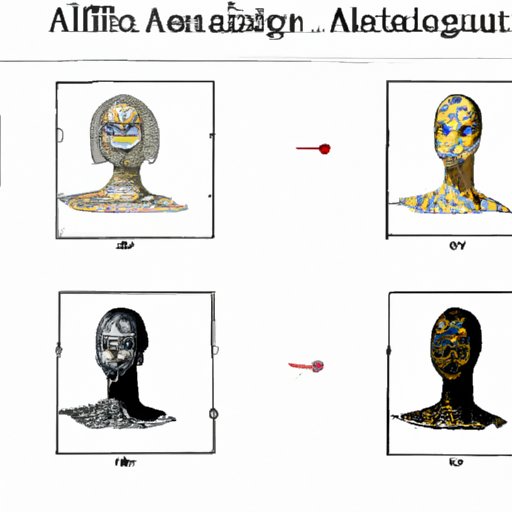Introduction
Artificial intelligence (AI) has made incredible advancements in recent years and is being used to solve complex problems in a wide range of fields. As AI continues to improve, so too does its ability to create art. From digital paintings to 3D sculptures, AI can generate images that are indistinguishable from those created by humans. But what exactly is needed to get AI to draw?
To understand how to get AI to draw, it is important to have an understanding of what AI and machine learning are, as well as the basics of drawing algorithms. AI is the simulation of human intelligence processes by machines, while machine learning is the process of teaching machines to perform tasks without being explicitly programmed. Drawing algorithms are sets of instructions that allow machines to create images from data.
Research the Basics of AI and Machine Learning
Before attempting to get AI to draw, it is important to learn about the basics of AI and machine learning. There are many different types of algorithms that can be used for AI and machine learning, such as decision trees, support vector machines, k-nearest neighbors, and deep learning. It is important to research these algorithms and understand which ones are most suitable for the task at hand.
In addition to researching different algorithms, it is also important to learn about neural networks. Neural networks are computer systems modeled after the human brain and are used for pattern recognition and classification tasks. Understanding how neural networks work is essential for successfully getting AI to draw.

Understand the Basics of Drawing Algorithms
In order to get AI to draw, it is necessary to understand the basics of drawing algorithms. One of the most popular drawing algorithms is Generative Adversarial Networks (GANs). GANs are a type of deep learning algorithm that uses two neural networks—a generator and a discriminator—to generate new images from existing data. The generator creates new images, while the discriminator evaluates them and provides feedback to the generator.
In addition to GANs, pre-trained models can be used to generate images. Pre-trained models are models that have already been trained on large datasets and can be used to generate images without requiring additional training. Pre-trained models can be used to quickly generate images with minimal effort.

Learn How to Use AI Frameworks for Image Generation
Once you have a basic understanding of AI, machine learning, and drawing algorithms, it is time to learn how to use AI frameworks for image generation. AI frameworks are software libraries that provide tools and algorithms for developing AI applications. Popular AI frameworks include TensorFlow, Keras, PyTorch, and Caffe.
To use an AI framework for image generation, you must first select an appropriate framework based on your needs. Once you have selected a framework, you can input data into the framework and begin training your model. This data can be images, videos, audio files, or text documents.
Utilize Generative Adversarial Networks (GANs)
Generative Adversarial Networks (GANs) are the most popular type of drawing algorithm and are often used for image generation. To use GANs, it is important to understand their architecture. GANs consist of two neural networks—a generator and a discriminator—which work together to generate new images. The generator creates new images, while the discriminator evaluates them and provides feedback to the generator.
Once you understand the architecture of GANs, you can train your model using the data you have inputted into the AI framework. Training your model involves adjusting the parameters of the generator and discriminator until the generated images meet your desired quality. After training your model, you can evaluate its performance and make adjustments if necessary.
Take Advantage of Pre-trained Models
In addition to GANs, pre-trained models can be used for image generation. Pre-trained models are models that have already been trained on large datasets and can be used to generate images without requiring additional training. Pre-trained models can be used to quickly generate images with minimal effort.
When utilizing pre-trained models, it is important to identify suitable models and leverage them appropriately. When selecting a pre-trained model, it is important to consider the type of data that the model was trained on and determine whether or not it is suitable for the task at hand. Once you have identified a suitable pre-trained model, you can use it to quickly generate images with minimal effort.

Experiment with Different Types of Data
When attempting to get AI to draw, it is important to experiment with different types of data. Depending on the task, different types of data may yield better results. For example, if you are attempting to generate realistic images of people, then using photographs of real people may yield better results than using abstract shapes. Similarly, if you are trying to generate images of animals, then using photographs of animals may yield better results than using drawings.
When experimenting with different types of data, it is important to consider different data sources. Images can be obtained from public databases, such as ImageNet, or they can be generated using generative algorithms. In addition to images, audio files, video files, and text documents can also be used to generate images.
Test Your AI Drawing Program
Once you have created your AI drawing program, it is important to test it to ensure that it is performing as expected. Testing your program involves evaluating its performance and making adjustments if necessary. If the generated images do not meet your desired quality, then you can adjust the parameters of the generator and discriminator until the generated images are of satisfactory quality.
It is also important to keep track of the progress of your program over time. You can do this by tracking the accuracy of your model and the speed at which it is generating images. This will help you identify any areas where your program is performing poorly and make adjustments accordingly.
Conclusion
Getting AI to draw is an exciting and challenging task. By following the steps outlined in this article, you can learn how to get AI to draw with greater success. Start by researching the basics of AI and machine learning, understanding the basics of drawing algorithms, learning how to use AI frameworks for image generation, utilizing generative adversarial networks and pre-trained models, and experimenting with different types of data. Finally, test your AI drawing program and make adjustments if necessary. With the right approach, you can get AI to draw stunning images with ease.
(Note: Is this article not meeting your expectations? Do you have knowledge or insights to share? Unlock new opportunities and expand your reach by joining our authors team. Click Registration to join us and share your expertise with our readers.)
